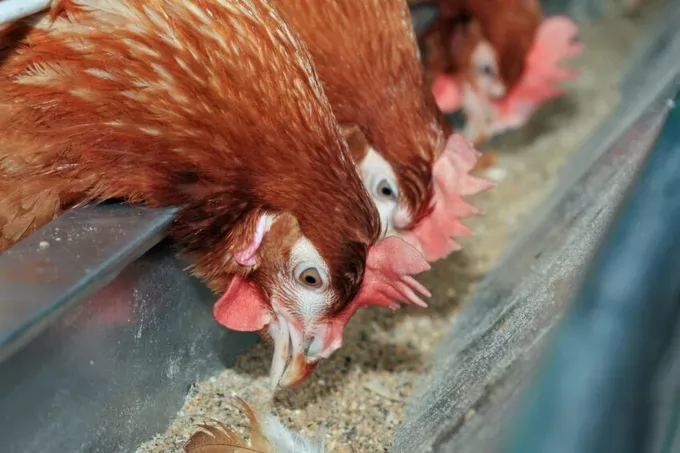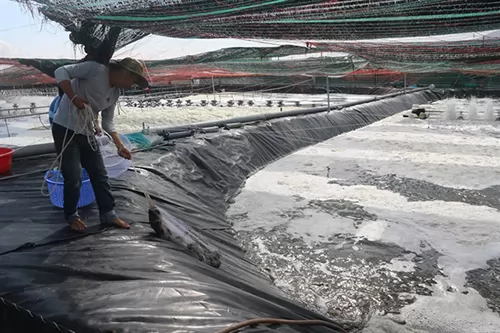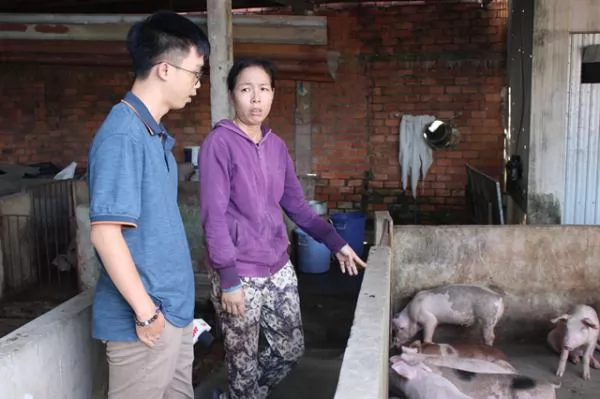Impact of feed source pathogens on layer egg production

Photo: Anitox
(VAN) Controlling feed-source pathogens is important for maintaining flock productivity and promoting food safety.
Effective strategies reduce the incidence of performance-limiting diseases like enteritis, ultimately curbing mortality rates, preserving flock uniformity and safeguarding egg quality.
Commercial egg production has evolved significantly in recent decades, driven by factors ranging from economic dynamics to shifting consumer preferences. With advancements in technology and management practices, the industry has witnessed efficiency improvements as well as new challenges, particularly those relevant to layer health and welfare. Many of these changes have led to an increased focus on how feed source pathogens impact layer egg production.
Feed quality and gut health impact layer productivity
A healthy gut is critical to efficient feed conversion and nutrient absorption. Disruption of the microbiome can lead to performance-limiting disease such as enteritis, which impairs villi growth, reducing absorptive capacity and feed conversion rates.
The gut microbiome of a layer is responsible for maintaining health, productivity and overall well-being. Comprised of trillions of microorganisms, including bacteria, fungi and viruses, the microbiome intricately interacts with the host, regulating nutrient absorption, metabolism and immune responses. Disruptions in microbiome composition, known as dysbiosis, can precipitate various health disorders, including gut inflammation, reduced feed conversion and heightened susceptibility to infectious diseases.
Feed quality plays a pivotal role in shaping the structure and function of the poultry gut microbiome. Feed, with its variable microbial loads, serves as a proven vector for bacterial and viral pathogens. The presence of elevated microbial loads in feed correlates with an increased prevalence of pathogens. Extensive analysis of thousands of feed and feed ingredient samples collected globally and tested by Anitox’s Laboratory has shown that feed is host to diverse microbial profiles.
Unlike other transmission routes, feed is centrally produced, disseminated throughout commercial layer operations and consumed daily. Numerous avian pathogens, including bacteria, viruses, and fungi, have been traced back to feed sources. Contaminated raw materials, particularly during wet harvests, serve as breeding grounds for mould, bacteria, and mycotoxins, finding their way into finished feeds. Animal by-products and other feed ingredients harbour high bacterial loads, exacerbating the risk. Unlike other poultry diets, layer mash doesn’t experience typical heat exposure via pelleting and remains particularly vulnerable to pathogen contamination.
Salmonella
Salmonella is the most frequently researched feed source pathogen, with over 500 publications existing today. For example, a surveillance study conducted in the US spanning from 2002 to 2009 by Li et al. (2012) documented a 12.5% contamination rate of Salmonella in feed and feed ingredient samples obtained from manufacturing facilities. Additionally, Kukier et al. (2013) conducted a survey revealing the presence of pathogens in various feed ingredients, indicating that 0.7% of animal-derived proteins, 2.2% of oilseed meals and 1.3% of cereal grain samples tested positive for Salmonella. Morita et al. (2007) and Wierup et al. (2010) also identified Salmonella in soybean meal and rapeseed meal samples at varying rates. In a recent report by Munoz et al. (2021), a year-long study across five mills unveiled a high incidence of Clostridium spp. and the presence of E. coli in sampled ingredients and finished feeds.
Disruption of the microbiome by feed source pathogens such as Clostridia can increase the risk of enteritis within layer production systems. Enteritis outbreaks within layer flocks typically manifest in two critical ways, disrupting flock uniformity before the onset of laying and diminishing productivity post-18 weeks of age. Layer body weight at sexual maturity plays a pivotal role in determining egg weight and overall egg mass production and is largely impacted by management practices and nutrition. Mild cases can increase feed conversion rates whereas severe disease, like focal duodenal necrosis, can slash production by up to 10% and significantly impact egg size.
Feed sanitation supports layer productivity
To optimise egg production, a concerted effort to ensure clean, pathogen-free feed is imperative. By reducing microbial loads in feed and ingredients, layer producers can fortify gut health, enhance energy conversion and shield flock productivity from enteritis and other performance-limiting diseases.
Incorporating feed sanitation protocols into layer production not only controls inbound microbial loads but also fosters gut development, promotes a balanced microbiome and enhances overall performance and health. Initial data from ongoing studies suggests that efficient feed sanitation methods can deter Salmonella colonisation in hens via feed, thereby enhancing egg production during peak laying periods. Moreover, feed sanitation influences microbiome composition, laying the groundwork for healthier birds throughout the production cycle.
Amidst the heightened demands of modern poultry production, where efficiency, safety, and nutrition are of critical importance, feed sanitation emerges as an essential tool for controlling feed-source pathogens. Ensuring clean feed at the point of consumption serves as a defence against pathogen prevalence within live production systems, promoting gut health, efficient energy conversion and ultimately reducing the incidence of performance-limiting diseases, bird mortality and egg contamination within layer production systems.
True feed sanitisers, such as Termin-8 and Finio offer producers unparalleled control over feed pathogens, providing long-term protection against recontamination. By controlling pathogen prevalence in feed, producers mitigate pathogen ingression into the gut, preventing colonization and imbalance. Implementing effective strategies to manage microbial levels in layer feed, particularly during crucial growth phases, gives producers the power to manage pathogen ingress and protect layer well-being and efficiency.
Reducing microbial loads in feed is crucial for maintaining optimal layer health and performance. To discover how feed sanitation can support your layer health and performance initiatives, reach out to your Clean Feed Expert today.
H.D
(Poultryworld)
Maybe you are interested

High-tech shrimp breeding yields high profits
BÀ RỊA-VŨNG TÀU — More farmers, co-operatives and companies in the southern province of Bà Rịa-Vũng Tàu are seeing much higher profits by using advanced farming techniques to breed shrimp.

Kiên Giang eyes sustainable development of marine aquaculture
KIÊN GIANG - The Cửu Long (Mekong) Delta province of Kiên Giang is seeking to make its marine aquaculture safe and sustainable and economically efficient, according to its Department of Agriculture and Rural Development.

HCM City to switch from pork production to pig breeding
HCM CITY — HCM City plans to move its pig farming industry away from breeding for pork and increase the number of pigs raised for breeding purposes in the next five years.





